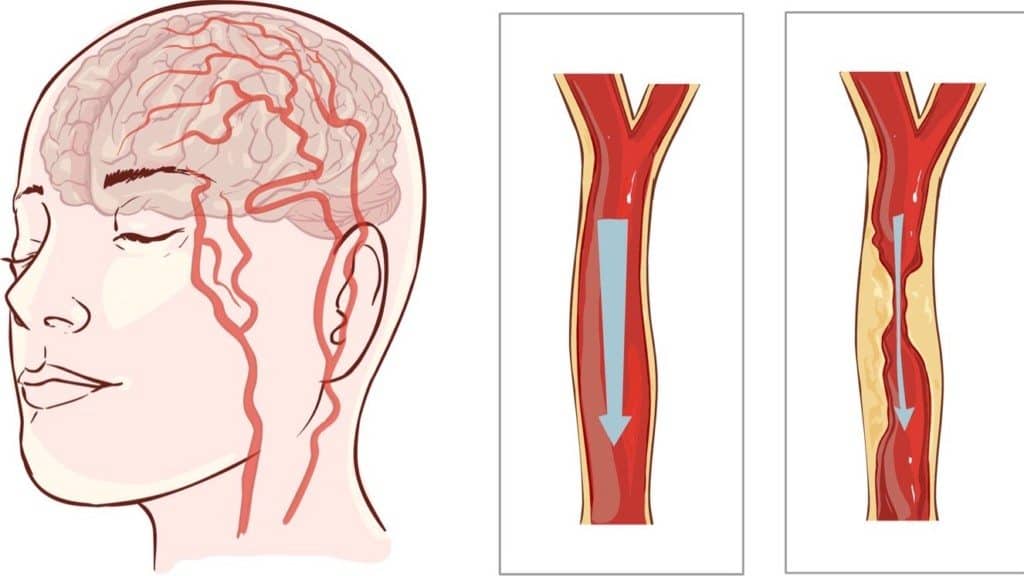Aneurysm: “an abnormal bulge or ballooning of the wall of a blood vessel. An aneurysm can burst (rupture) causing internal bleeding and possible death.”
Migraine: “a throbbing pain or a pulsing sensation, usually on just one side of the head.”~ The Mayo Clinic
Lee Broadway’s Story
On April 1, 2017, Lee Broadway – a wife and mother to four children – died from a brain aneurysm after complaining of a severe migraine. She had suffered from migraine headaches since the age of 8.
Lee’s husband, Eric Broadway, was told by emergency room doctors that “Everything looks good” just two hours before hearing “There’s nothing we can do.”
According to Eric, there had been a severe complication during his wife’s aneurysm procedure. Sadly, this complication resulted in Lee losing too much blood in her brain.
Friends and family celebrated Lee’s life – and what would have been her 42nd birthday – on April 8th, just five days after she passed.
Educating the Public
Dr. Howard A. Riina, professor and vice chairman of neurosurgery at the NYU Langone Medical Center, heard about Lee’s story and decided to take action. He began by reaching out to the public about the nature of aneurysms – and the difference between them and migraines.
Dr. Riina describes the pain felt from an aneurysm compared to the pain felt from a migraine (the writer’s emphases):
” (It’s like) the worst headache of someone’s life. It’s not surprising for someone to come into the emergency room – even if they have a history of headaches or migraines – and say they feel like they’ve been struck by lightning or have a headache that brought them to their knees. It’s this severe, severe headache that’s out of the ordinary.”
He goes on to describe how someone with a history of migraines can tell the difference:
“People with migraines sometimes have auras (visual disturbances), and they have routines and things they do to help relieve the headache — being in a dark, quiet room and taking medicine, things like that. But if that doesn’t help, it could be an aneurysm. It’s a very unique headache, and really the main symptom is feeling like this headache is like none you’ve ever had.”
In short, if you have a history of migraines and your regular self-treatment routines do not help, it’s vital that you immediately seek medical assistance.
A Few Aneurysm Facts
1. Aneurysm’s are rare
Dr. Riina states that brain aneurysms are very rare. “It’s somewhere between 30,000 to 50,000 cases a year. And ruptured aneurysms (as experienced by Lee Broadway) are a much smaller percentage.”
2. Unruptured aneurysms affect millions worldwide
Riina estimates that up to 5 to 10 percent of the world’s population walk around with an unruptured aneurysm – or roughly 350 to 700 million people.
3. Most unruptured aneurysms are asymptomatic
Riina estimates that only 1 to 2 percent of aneurysms actually burst each year. In most cases, the individual doesn’t experience any noticeable symptoms.
4. Family history is a key indicator
“If you had a parent, uncle, brother, sister or cousin that had an aneurysm you should mention it to your primary care physician or your neurologist,” says Riina.
5. Certain conditions and lifestyle choices increase risk
Polycystic kidney disease and Ehlers-Danlos syndrome are two medical conditions which increase the risk of a brain aneurysm. Lifestyle choices, including a high-fat diet and smoking, may also increase the risk of someone getting an aneurysm.
“Unless you have a family history or one of these conditions, the likelihood that you’ll have [an aneurysm] is pretty low,” he says. “The average person doesn’t need to run off and get a screening.”
Signs and symptoms
According to WebMD, common signs and symptoms of a ruptured aneurysm include:
– A drooping eyelid
– Blurred or double vision
– Confusion
– Loss of consciousness
– Nausea and vomiting
– Seizure
– Sensitivity to light
– Sudden, extremely severe headache
An unruptured aneurysm may produce the following symptoms, if any:
– A dilated pupil.
– Change in vision or double vision.
– Numbness of one side of the face.
– Pain above and behind one eye.
WebMD advises calling 911 if you develop a sudden and extreme headache, experience loss of consciousness, or have a seizure.
(C)Power of Positivity, LLC. All rights reserved
Sources:
http://people.com/human-interest/north-carolina-mom-of-four-dies-suddenly-after-complaining-migraine/
http://www.health.com/syndication/migraine-or-aneurysm-neurologist-weighs-in-on-warning-signs-to-watch-out-for-after-mom-of-four-shocking-death?xid=socialflow_facebook_health
https://www.mayoclinic.org/diseases-conditions/brain-aneurysm/symptoms-causes/syc-20361483
The post Neurosurgeon Explains the Warning Signs of An Aneurysm to Never Ignore appeared first on Power of Positivity: Positive Thinking & Attitude.
【Top 10 Malaysia & Singapore Most Beautiful Girls】Have you follow?